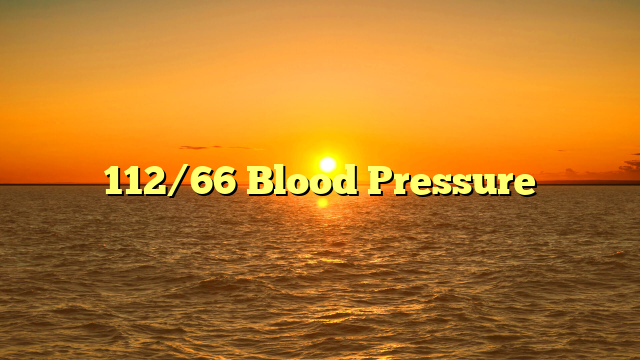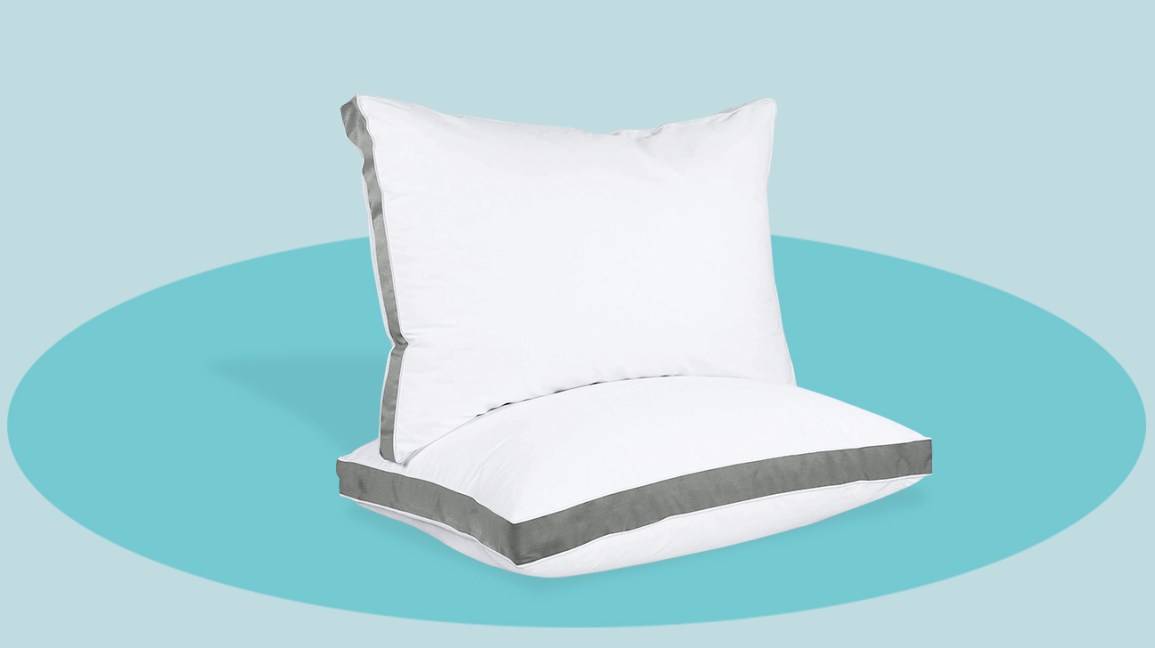112/66 Blood Pressure

An individual’s blood pressure is determined by the amount of blood their heart pumps and the resistance to blood flow in their arteries. The top number, systolic pressure, represents the pressure in the arteries when the heart contracts. The bottom number, diastolic pressure, represents the pressure in the arteries between beats.
A normal blood pressure reading is 112/66 mmHg and anything above this is considered high. High blood pressure puts extra strain on your heart and vessels, and can lead to a heart attack or stroke. There are a variety of lifestyle changes you can make to lower your blood pressure, such as eating a healthy diet, reducing salt intake, and getting regular exercise.
If you have a blood pressure reading of 112/66, that means your systolic blood pressure (the top number) is 112 and your diastolic blood pressure (the bottom number) is 66. A normal blood pressure is considered to be 120/80 or lower. So, a reading of 112/66 would be considered slightly elevated.
While it’s not cause for alarm, it is something to keep an eye on. If your readings continue to be high, you may need to make some lifestyle changes or start taking medication.
What is a Normal Blood Pressure Reading?
Is 112 Too Low for Blood Pressure?
No, 112 is not too low for blood pressure. In fact, it is considered to be within the normal range. Blood pressure is a measure of the force that your heart pumps blood through your body.
The systolic number (the top number) measures the force when your heart contracts and pump blood out. The diastolic number (the bottom number) measures the force when your heart relaxes between beats and fills back up with blood. A normal blood pressure reading should fall below 120/80 mmHg.
Is 66 Too Low for Blood Pressure?
No, 66 is not too low for blood pressure. In fact, blood pressure varies throughout the day and can be affected by a number of factors, so it is not unusual for it to fluctuate. However, if you are concerned about your blood pressure, you should speak to your doctor.
What is Dangerously Low Blood Pressure?
Hypotension, or low blood pressure, is a condition in which blood flow through the arteries is abnormally low. Blood pressure is measured by two numbers: the systolic (top) number, which measures the pressure when your heart contracts and pumps blood through your body, and the diastolic (bottom) number, which measures the pressure when your heart relaxes between beats. A normal blood pressure reading is 120/80 mmHg.
Hypotension can be dangerous because it means that not enough oxygen-rich blood is reaching your organs and tissues. This can cause dizziness, lightheadedness, fainting, and even shock. If you have hypotension, it’s important to see a doctor so that the cause can be identified and treated.

Credit: apps.apple.com
112 Over 66 Blood Pressure is That Normal
If you have a blood pressure reading of 112 over 66, is that considered normal? The answer may surprise you.
While a blood pressure reading of 112 over 66 is lower than the 120/80 that is typically considered normal, it is still within the range of what is considered normal.
So, if your blood pressure is 112 over 66, don’t worry – you’re not out of the normal range.
However, it is worth keeping an eye on your blood pressure readings. If your readings start to consistently fall outside of the normal range (either higher or lower), it could be an indication of a more serious problem and you should speak to your doctor about it.
112 66 Blood Pressure Pregnant
If you’re pregnant, your blood pressure will be monitored at every prenatal visit. A reading of less than 120/80 mmHg is considered normal. If your blood pressure is consistently above this level, you may have gestational hypertension, which can put you and your baby at risk for complications.
Gestational hypertension is defined as high blood pressure that develops after 20 weeks of pregnancy. It can occur with or without protein in the urine (proteinuria). Gestational hypertension usually goes away after delivery, but it can lead to preeclampsia, a serious condition that can threaten the lives of both mother and child.
Preeclampsia is characterized by high blood pressure and proteinuria. It typically happens after 37 weeks of pregnancy and can cause serious health problems for both mother and child if not properly managed. Preeclampsia can progress to eclampsia, a life-threatening condition that causes seizures.
If you have gestational hypertension or preeclampsia, your healthcare provider will closely monitor you and your baby throughout your pregnancy. You may need to be on bed rest or hospitalized to help manage your condition. In severe cases, early delivery may be necessary to protect the health of both mother and child.
Blood Pressure by Age
When it comes to blood pressure, age is an important factor to consider. As we age, our blood vessels and arteries harden and become less flexible. This can cause an increase in blood pressure.
There are a few things we can do to help keep our blood pressure in check as we age. Eating a healthy diet and maintaining a healthy weight are two key factors. Exercise is also important for keeping our blood vessels and arteries healthy.
If you have high blood pressure, there are medications that can help lower it. However, lifestyle changes are always the best first step in managing any health condition.
112/66 Blood Pressure Child
High blood pressure is a common condition that affects children. According to the Centers for Disease Control and Prevention (CDC), about 1 in every 9 children has high blood pressure.
High blood pressure can lead to serious health problems, including heart disease and stroke.
That’s why it’s important to get your child’s blood pressure checked regularly by a doctor or nurse.
If your child has high blood pressure, there are things you can do to help lower it. These include:
*Encouraging your child to eat a healthy diet that is low in salt and fat
*Helping your child maintain a healthy weight
*Encouraging your child to be physically active
Normal Blood Pressure
What is normal blood pressure? The answer may not be as simple as you think.
For most people, normal blood pressure is defined as a reading of less than 120/80 mmHg.
However, there is a growing body of evidence that suggests that for some people, particularly those over the age of 60, a higher systolic blood pressure (the top number in a reading) may actually be associated with better health outcomes. This so-called “U-shaped” relationship between blood pressure and health has been observed in several large studies and appears to be independent of other risk factors such as smoking, cholesterol levels, and diabetes.
So what does this mean for you?
If you are over 60 and have consistently high blood pressure readings (systolic greater than 140), you should discuss this with your doctor. It may be that your blood pressure is not actually indicative of poor health and that no treatment is necessary. On the other hand, if you have high blood pressure and are also experiencing symptoms such as chest pain or shortness of breath, it’s important to seek medical attention right away as these could be signs of a more serious condition.
112/66 Blood Pressure Nhs
If your blood pressure is consistently above 140/90 (or if it’s above 130/80 and you have diabetes or kidney disease), then you have high blood pressure. High blood pressure increase your risk of having a stroke, heart attack or kidney disease. There are usually no symptoms of high blood pressure, so it’s important to get your blood pressure checked regularly.
If your blood pressure is consistently below 120/80, then you have low blood pressure. Low blood pressure isn’t usually a cause for concern, but if you experience dizziness or fainting, then you should see a doctor.
The ideal blood pressure is considered to be around 120/80.
However, it’s normal for people to have slightly higher or lower readings from time to time.
Conclusion
If your blood pressure is 112 over 66, you have what is considered low blood pressure. This means that the force of your blood against your artery walls is lower than it should be. Low blood pressure can be caused by a variety of things, such as dehydration, pregnancy, or certain medications.
It is usually nothing to worry about and can be easily treated by drinking plenty of fluids or lying down for a few minutes. However, if you experience symptoms like fainting or dizziness along with low blood pressure, you should see a doctor to make sure there isn’t an underlying condition causing it.
